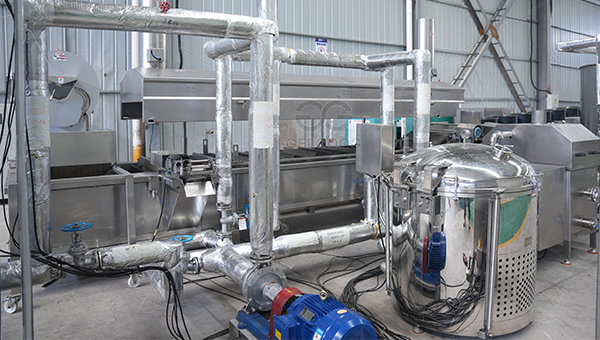Plantain chips as a popular healthy snack, its production equipment is in increasing demand in the global market. For companies, purchasing the right plantain chips production machine not only improves productivity but also saves on labor costs, thus maximizing profits. However, the price of plantain chips production equipment usually varies depending on its capacity and configuration, with a price range from $20,000 to $100,000.

- The influence of production capacity on the price
Production capacity is one of the most important factors in determining the price of plantain chips production line. The larger the production capacity, the higher the design of the production line and the specification of the required equipment, which directly increases the cost.
Small lines (1-2 tons per day)
Usually suitable for SMEs or start-ups, small production lines have a lower daily production capacity, smaller equipment sizes, and are usually priced between US$20,000 and US$40,000. The configuration of this type of production line is relatively simple, including basic processes such as washing, peeling, slicing, frying, and seasoning, but the equipment is less automated and there is more manual intervention.
Medium-sized production line (3-5 tons/day)
Medium-sized lines are capable of meeting medium-sized production needs with significantly higher capacity. These lines are more fully equipped and have a higher degree of automation, usually with automatic conveyor belts, temperature control systems and automatic packaging equipment. Prices typically range from $40,000-$70,000.
Large-scale production line (more than 10 tons/day)
Large lines are suitable for mass production and are usually used in large food processing plants. This type of line is highly automated and can run consistently and efficiently, and has a better quality control system. Prices for these lines typically range from $70,000 – $100,000 and up.
2. Impact of configuration on price
In addition to production capacity, the configuration of the production line is also an important factor affecting the price. Different configurations include raw material handling, frying technology, drying equipment, and packaging methods.
Raw material handling systems
A basic plantain chips line usually consists of simple peeling and slicing machines, while more advanced lines may add automated washing, screening and de-contamination systems. These additional equipment can increase the efficiency of the line and the quality of the product, and therefore increase the cost.
Frying technology
The production process of plantain chips cannot be separated from the frying process, and the quality and technology of the frying equipment directly affects the cost of the production line. Ordinary fryers are relatively inexpensive, while high-end frying equipment with automatic oil temperature control and oil circulation filtration systems are more expensive. These technologies can extend the service life of the oil and ensure the taste and quality of the products.
Drying and De-oiling Equipment
Drying equipment is also one of the key parts of the plantain chips production line. For more demanding production lines, advanced technologies such as vacuum drying and freeze drying may be used, and the cost of such equipment is higher. And some production lines are also equipped with de-oiling equipment, which is used to reduce the oil content in the finished product and improve the healthiness.
Automation and Intelligent Configuration
The higher the level of automation and intelligence, the higher the price of the production line. Modern production lines are often equipped with fully automated conveyor belts, real-time monitoring systems for temperature and humidity, PLC control systems, etc. These systems can significantly reduce manual intervention and improve production efficiency and product consistency.
The price difference of plantain chips production equipment is mainly affected by production capacity, equipment configuration and brand. When choosing production equipment, enterprises should weigh the degree of automation and configuration of the equipment according to their own production scale, budget and requirements for product quality to find the most cost-effective solution.